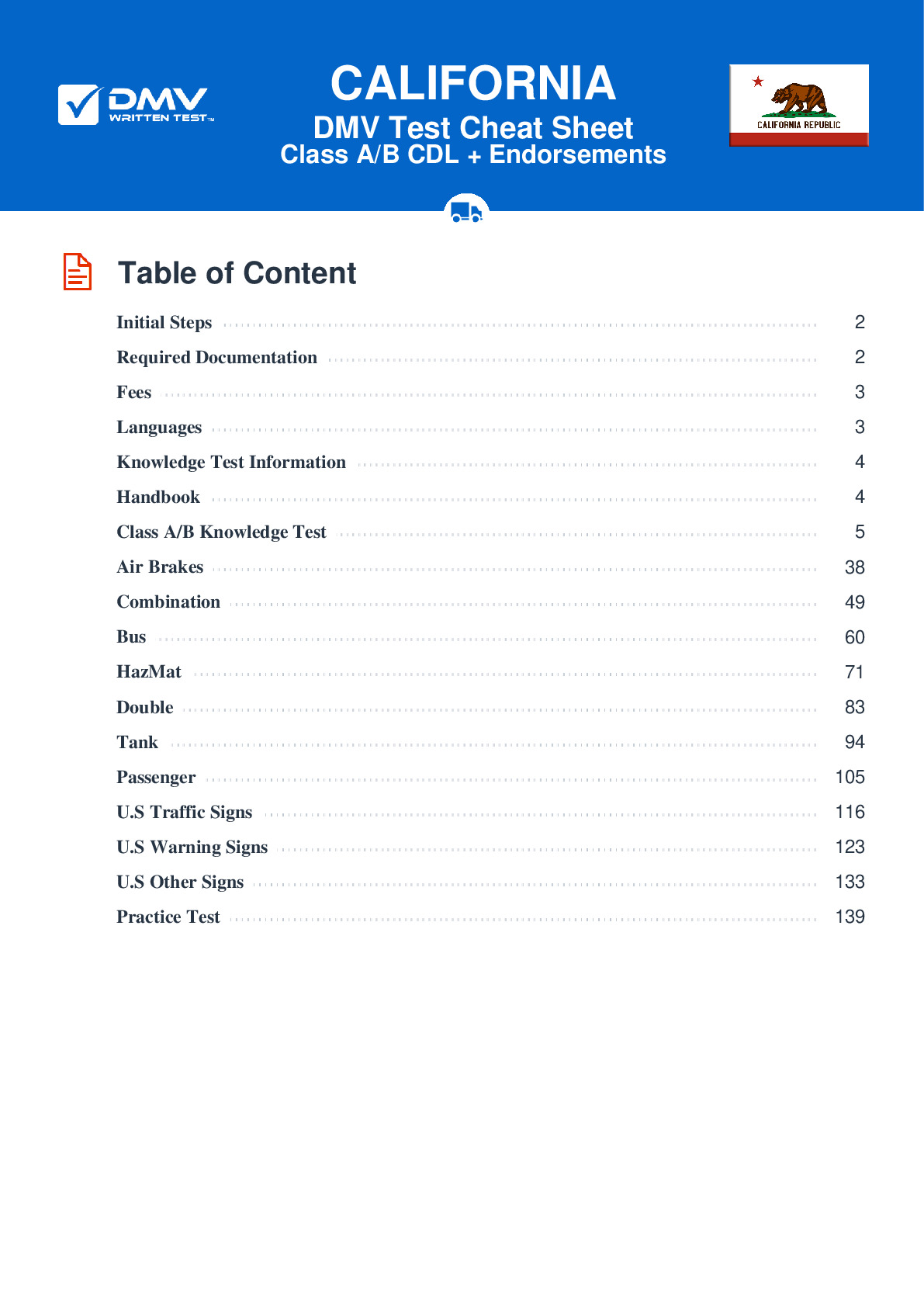Air Brakes
This endorsement is required for driving a vehicle with air brakes. To receive this endorsement, applicants must pass a test. The test consists of 25 multiple choice questions. Each question has three answer choices. To pass, the applicant must answer at least 20 questions correctly. Test questions come from the California Commercial Driver Handbook. Questions come from chapters covering: Air Brakes. The Air Brakes endorsement may be used with the Class A, B or C CDL.
Number of Question
Passing Score
13. During an applied leakage test, the maximum leakage rate for a double combination vehicle is:
Explanation
It is important to know the maximum air loss rate that is safe for your specific vehicle. A double combination vehicle should have a leakage rate no higher than 4 psi in a minute during an applied leakage test.
14. Anti-Lock Braking Systems (ABS):
Explanation
If equipped, ABS is in addition to a vehicle's normal braking system and does not increase or decrease the braking power of any other system. ABS only activates when a vehicle's wheels are about to lock.
15. What color light indicates a vehicle's ABS is not working?
Explanation
On vehicles with Anti-Lock Braking Systems (ABS), yellow malfunction lamps alert the driver to ABS malfunction.
16. If braking at a speed of 55 mph while driving on dry pavement, the brake lag can add ____ to your vehicle's total stopping distance.
Explanation
The total stopping distance for vehicles equipped with air brakes is made up of four factors: perception distance, reaction distance, brake lag distance, and braking distance. When braking at a speed of 55 mph while driving on dry pavement, the brake lag can add around 32 feet to a vehicle's total stopping distance.
17. While operating on a downgrade, you should brake until you reach a speed that is:
Explanation
While driving downhill, you should hold down the brake pedal until your vehicle reaches a speed 5 mph below your safe speed, then release the brake pedal. Repeat this process.
18. Before driving a vehicle with air brakes, you should ensure that the ____ come on automatically when air pressure falls below 45 psi.
Explanation




